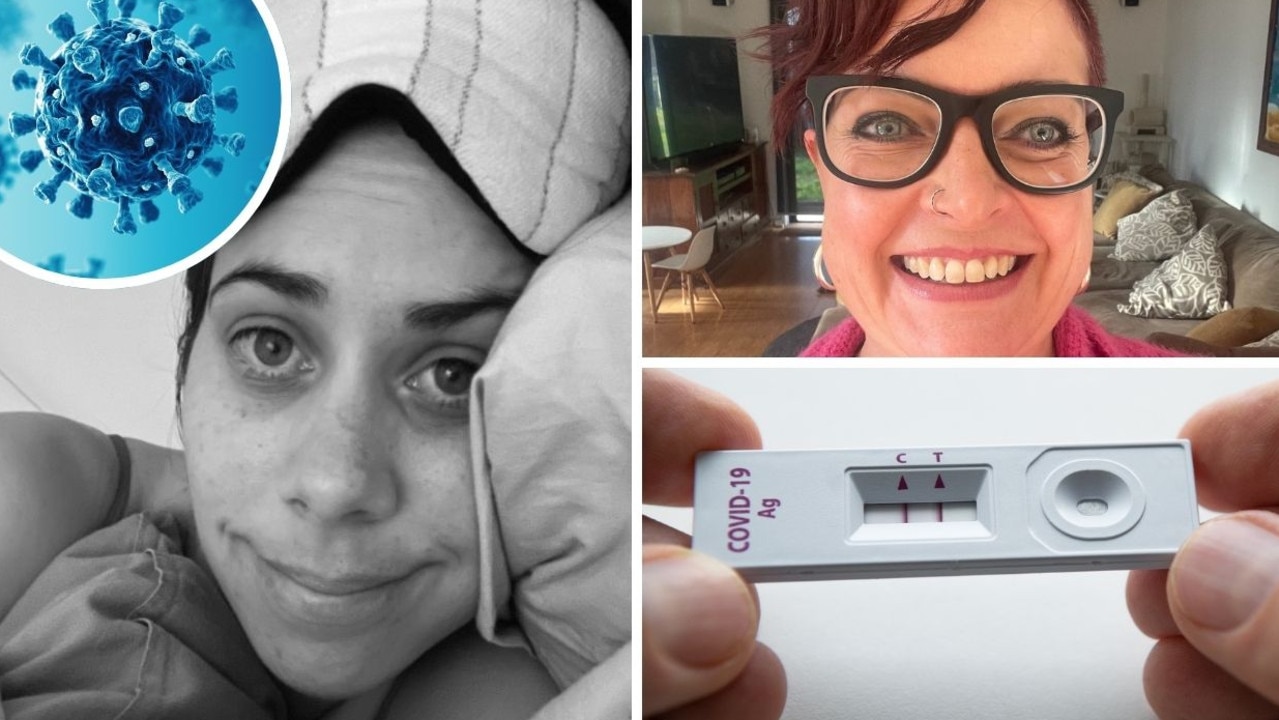Coronavirus updates: How the Federal Government’s COVID-19 tracing app really works
The Federal Government’s new coronavirus tracing app has launched, and new details have emerged of exactly how it works and what it means for your private information.
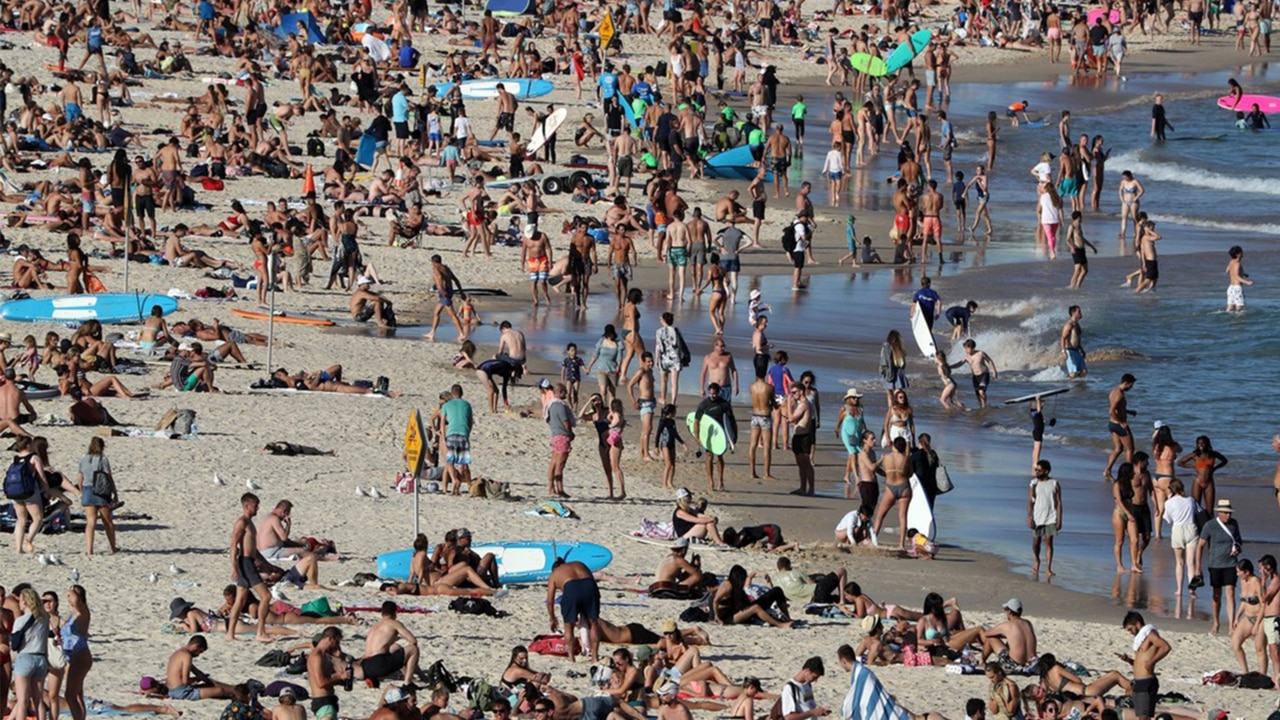
Coronavirus
Don't miss out on the headlines from Coronavirus. Followed categories will be added to My News.
PM says social distancing in place until vaccine created
Global virus death toll soars past 200,000
Britain hits grim new milestone
WHO warns against “immunity passports”
Australians are being encouraged to download the government’s voluntary coronavirus tracing app which is available from 6pm today.
Government Services Minister Stuart Robert said the app was developed with one purpose: to stop the spread of coronavirus.
“Once installed and running, the COVIDSafe app uses Bluetooth to look for other phones that also have the app installed,” he said.
“To be effective, users should have the app running in the background when they are coming into contact with others.
“Your phone does not need to be unlocked for the app to work.”
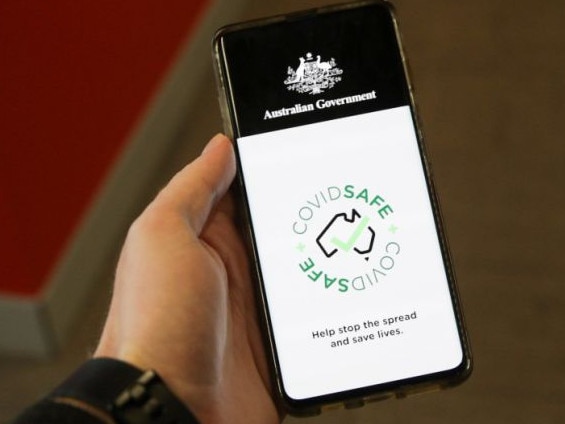
Mr Robert said the app then securely makes a “digital handshake”, which notes the date and time, distance and duration of the contact.
“All information collected by the app is securely encrypted and stored in the app on the user’s phone,” he said.
“No one, not even the user, can access it.”
Mr Robert said unless a person is diagnosed with COVID-19, no contact information collected in the app is disclosed or able to be accessed.
“Once the (infected) person agrees and uploads the data, only the relevant state or territory public health officials will have access to information,” he said.
“The only information they are allowed to access is that of close contacts – when a person has come within approximately 1.5 metres of another app user for 15 minutes or more – in their jurisdiction.”

Chief Medical Officer, Brendan Murphy, said COVIDSafe was be a major tool in streamlining the process of identifying contacts after a person tests positive for coronavirus.
“Finding out quickly means you can quarantine yourself or be treated much faster, protecting your family and friends from possible infection, and slowing the spread of the virus,” he said.
“Without this technology, health officials have to rely on people being able to remember who they have been around, and being able to provide contact details for those people.”
Prof Murphy said COVIDSafe only keeps contact information for 21 days.
“This covers the maximum incubation period for the virus and the time it takes for someone to be tested for COVID-19,” he said.
Health Minister Greg Hunt said once the coronavirus pandemic was over, and Australia no longer needs the app, the app and the information on it would be “deleted permanently”.
“No virus, no app,” he said.
‘DIGITAL HANDSHAKE’: APP TRACKS PEOPLE 1.5M FROM YOU
This is how COVIDSafe works:
- Every minute the app will use Bluetooth to check if any other phones with the app installed are within 1.5m of you.
- When two phones detect each other they exchange a “digital handshake” meaning each device shares an anonymous ID (which changes every two hours) to log the close contact.
- If the app detects another phone in close proximity 15 minutes in a row, that contact would be provided to health officials if you later contracted COVID-19.
- If you are diagnosed with COVID-19 a health official will ask if you would like to share the last 21 days of your contacts. You will be sent a text message with a pin number to consent to share.
- This data is sent to a national store and then provided to the relevant state officials, the federal government does not see the data at any time.
- Health officials then phone the contacts to tell them they may have been exposed to the coronavirus.
- All data on the phone is deleted after 21 days. If a person deletes the app it also deletes the data.
- The data sent to the national store is deleted at the end of the pandemic, which will be reviewed in six months time.
- The data on the phone is encrypted and cannot be seen by the owner or any other person. It is illegal for any law enforcement, government agency or court to attempt to access the data.
PRIVACY PROTECTED
Only state and territory health authorities are legally allowed to access data collected by the federal government’s voluntary contact tracing app, and must have direct consent from the phone’s user to do so.
Any attempt to access, decrypt, share or store data from the COVIDSafe app will be an offence, according to legislation designed to protect the privacy of Australians who download the program.
The app will be available to download on Android and Apple devices on Sunday afternoon, after the legislative instrument outlining some of the rules governing its use was posted online.
Relevant employees of state or territory health authorities, or officers, employees or relevant contractors of the Health Department or the Digital Transformation Agency are the only people who can collect, use or disclose data collected, and that the data must only be used to collate de-identified statistical information, according to the instrument.
The rules also said the COVID app data cannot be uploaded from a person’s mobile to the National COVIDSafe Data Store without the express consent of the person who has possession or control of the phone.
It is an offence to cause the COVID app data to be retained on a person’s mobile for longer than 21 days, and the Commonwealth must cause the entire national database to be deleted once the pandemic has concluded.
It is also illegal to decrypt the encrypted COVID data stored on a person’s phone.
The government has also implemented protections for people who do not want to download the app by making it an offence for a person to refuse someone entry to a premises or participation in an activity on the grounds they have not uploaded the COVIDSafe app or consented to upload data to the National Store.
Called the Biosecurity (Human Biosecurity Emergency) (Human coronavirus with Pandemic Potential) (Emergency Requirements — Public Health Contact Information) Determination 2020, the instrument is available to view here:
PM SAYS RESTRICTIONS HERE UNTIL VACCINE
Scott Morrison believes Australia is on the “road back” from tackling the coronavirus with some restrictions starting to lift.
The Prime Minister pointed to the reopening of elective surgery, schools starting to come back and says it won’t be long before some businesses are opening again.
“We are definitely on the road back now,” the prime minister told ABC radio on Sunday.
“We’ll try and get back to some type of normal.”
However, he said until there is a vaccine for COVID-19, social distancing will remain in place and Australians need to make hand hygiene instinctive.
“There has never been more effort in finding a vaccine for this virus and we are hopeful that might mean they get a breakthrough than otherwise might be the case,” he said.
The number of coronavirus cases, at around 6700, is small by international standards and is rising at an extremely slow rate compared to a few weeks ago.
However, the death toll rose to 81 after an 83-year-old man, who resided at Newmarch House in Caddens, NSW died on Saturday, operator Anglicare Sydney said.
BRITISH PM RETURNS TO WORK
British Prime Minister Boris Johnson is set to go back to work at Downing Street on Monday just a fortnight after leaving hospital after telling colleagues he is “raring to go” in the battle against coronavirus.
After spending a week at his country residence Chequers, Mr Johnson will be “back to his normal schedule” following treatment for COVID-19 as he grapples with the dilemma of when to ease Britain’s lockdown.
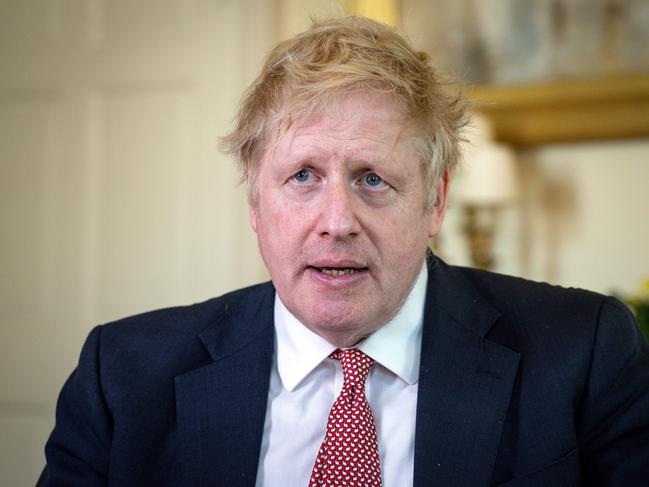
Mr Johnson may host Monday’s daily Downing Street news conference and possibly take on the new Labour leader Sir Keir Starmer at Prime Minister’s Questions on Wednesday, Britain’s Sky News reports.
“He is ‘raring to go’ and will be back Monday,” a Downing Street source told Sky News.
“He had a Chequers meeting with advisers on Friday and he will be meeting the Health Secretary, Matt Hancock, and getting back to his normal schedule.”
The world’s coronavirus death toll passed 200,000 early this morning Australian time as the number of infections approached three million.
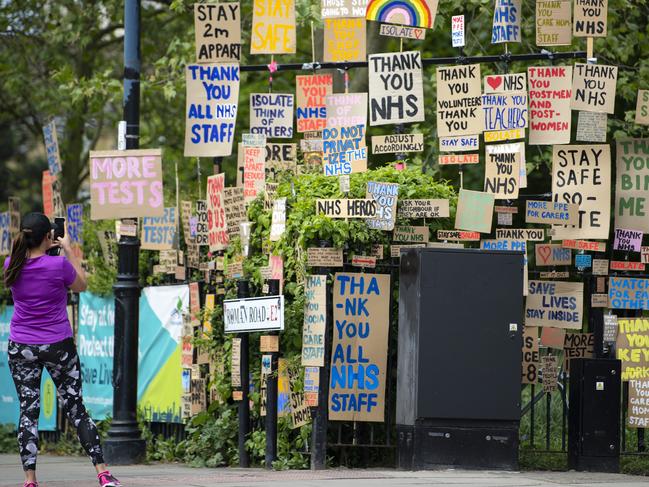
In Europe, the UK became the latest nation to report it has passed more than 20,000 COVID-19 deaths, a figure it described last month as its best-case scenario.
It stormed past the unwanted milestone when it recorded another shocking daily death toll of 813.
The tally means Britain has become the fifth country to pass 20,000 deaths in hospital from COVID-19 – behind the US, Italy, Spain and France. The US is fast closing in on one million infections.
UK Home Secretary Priti Patel also urged her country to “stay strong” and said people should stay at home for the foreseeable future.
“Our instruction remains clear, people should stay at home, protect the NHS (National Health Service) and save lives,” Ms Patel said.

“We know that people are frustrated but we are not out of danger. It is imperative that we continue to follow the rules.”
As the death toll rises, the government is facing growing criticism over its response to the pandemic. It was slower to impose a lockdown than European peers and is struggling to raise its testing capacity.
Meanwhile a six-month-old baby who was being treated for COVID-19 received a guard of honour while being moved out of isolation at a hospital in the UK on Friday.
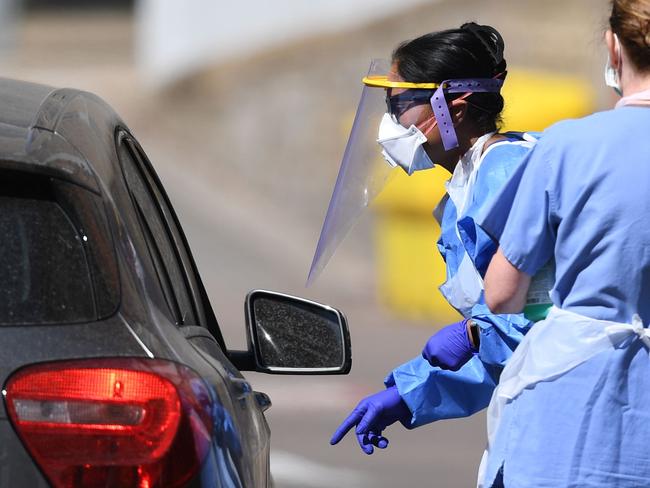
The hospital said baby Erin was in an isolation room with her mother, Emma, for two weeks while undergoing treatment for the highly contagious virus. This video (see above) shows Erin receiving a guard of honour from staff.
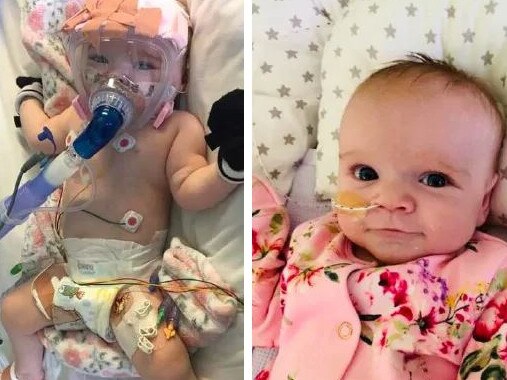
“Today, little Erin beat COVID-19 after testing negative,” the hospital said.
“She is still being treated for other conditions at Alder Hey, but is making good progress.”
WHO CASTS SERIOUS DOUBT ON GREAT COVID-19 HOPE
The World Health Organisation last night backtracked on an earlier warning it made against issuing “immunity passports” to people who have recovered from COVID-19 after causing panic on social media.
The health agency, which came under fire from Prime Minister Scott Morrison last week for its early response to the pandemic, had originally issued a statement about a scientific note that reported there was “no evidence” that antibodies protected recovered coronavirus patients.
The idea of issuing certificates to people who have been sick with the virus has been gaining ground globally as authorities look for ways out lockdowns.
But the WHO warned that the certificates could pose a health risk if it provided unjustified assurances of protection.

“At this point in the pandemic, there is not enough evidence about the effectiveness of antibody-mediated immunity to guarantee the accuracy of an ‘immunity passport’ or ‘risk-free certificate’,” the note said.
“People who assume that they are immune to a second infection because they have received a positive test result may ignore public health advice. The use of such certificates may therefore increase the risks of continued transmission.”
The statement caused panic on social media and hours later, the health agency deleted the original thread from its Twitter account and posted a clarification.
“Earlier today we tweeted about a new WHO scientific brief on ‘immunity passports’, the WHO said.
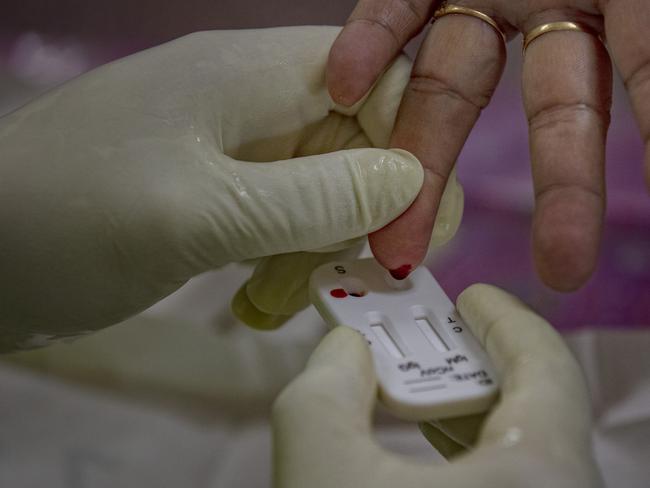
“The thread caused some concern & we would like to clarify: We expect that most people who are infected with #COVID-19 will develop an antibody response that will provide some level of protection.”
The WHO said “to avoid further confusion” the original warning had been taken down, including a screenshot in its clarification posts.
One Twitter user wrote: “Why would anyone trust what the WHO says after giving such bad advice throughout this pandemic?”
Another said: “Can someone answer why the natural antibodies of people who have recovered from #covid19 wouldn’t protect them against the virus but antibodies from a vaccine would?”
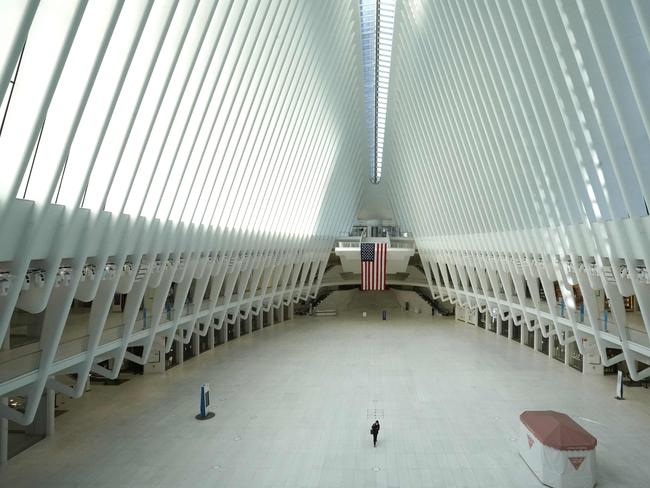
US HEATWAVE TESTS STAY-AT-HOME ORDERS
As summer arrived early in California, thousands of people headed for the beach, many of them not only defying stay-at-home orders, but also ignoring social distancing.
Amid the global pandemic that’s killed more than 1600 people in the Golden State, an estimated 40,000 people hung out at Newport Beach and thousands of others spent time at Huntington Beach on Friday.
Dozens of areas of Southern California saw temperatures of 32 degrees or higher before noon, and heat advisories went into effect from the Central Coast south through Los Angeles County and down through interior areas to the southern US border with Mexico.
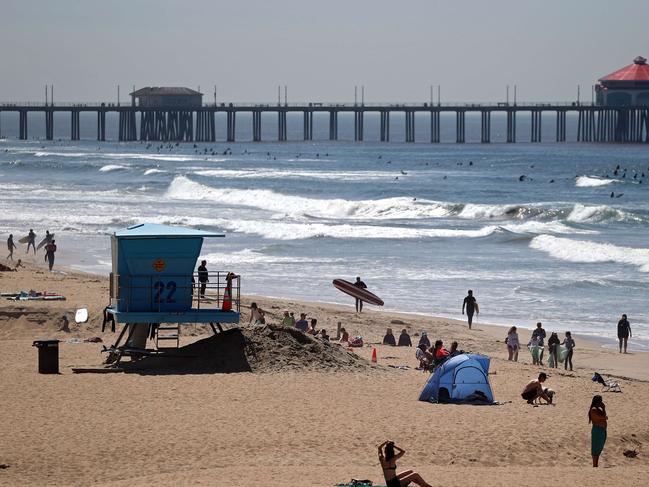
“We’re seeing a huge increase in crowds that we would normally see out here in the middle of the summer,” said Brian O’Rourke, the lifeguarding battalion chief.
Newport Beach is located in Orange County — where beaches have not been closed by local officials, but restrictions have been put in place to keep people safe.
Lifeguards believe many of those getting some sunshine travelled from Los Angeles and San Diego, both counties in which beaches have been closed.
Dr Barbara Ferrer, director of the Los Angeles County Department of Public Health, pleaded to those travelling around for some beach time: “We don’t need you to go out and get infected in another county and then bring yourself, infected, back here to LA County.”
KTTV reports many people at the beach were not practising social distancing and were not wearing masks.


Lisa Mangat, director of California State Parks, told the OCR: “With the warm weather, it’s only natural people want to make use of parks and beaches, but we are encouraging them to stay home.”

Governor Gavin Newsom said last week it’d be “unrealistic” to think California could go back to what many considered a “normal” way of life before the pandemic — and said he fears the worst might not be over.
“If we all pull back, we could see a second wave that makes this pale in comparison,” the Democratic governor said.
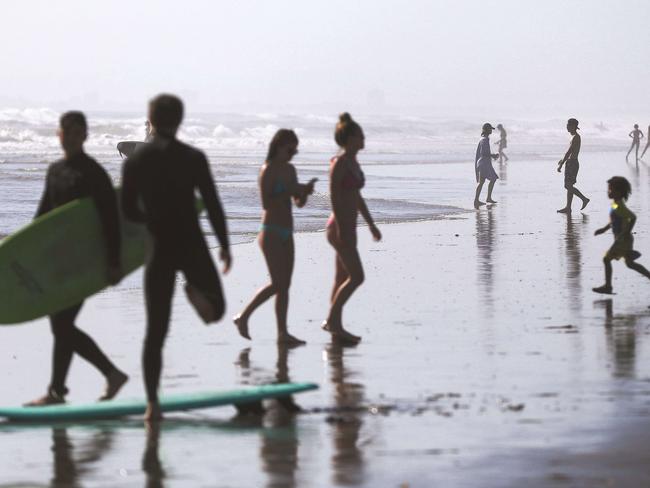
NY GOV: WE’VE HAD 56 DAYS, OUR ANCESTORS SUFFERED FOR YEARS
New York Governor Andrew Cuomo has urged people growing restless in lockdown that previous generations were forced to live under testing conditions for years during wars and other crises.
Mr Cuomo announced New York had another 437 COVID-19 deaths yesterday and said he understood people were desperate to get back to”normal” – but he reminded them that without social distancing, his devastated state could have lost many thousands more lives.
“Generations are called upon to deal with high levels of difficulty,” he said.
“We are called upon to deal with this crisis; the 1918 pandemic went on for two years, we’re on day 56.”
Mr Cuomo said the Great Depression and the world wars last for years, not weeks or months, and America still managed to come out the other side in a strong position.

“I get 56 days is a long time and I get that it's the worst thing that we have experienced in modern history, I get that,” he said. “But just a little perspective, not that it makes our situation any better but it gives you a sense perspective.
“What did we accomplish? 100,000 fewer infections – that’s what 56 days of our relative living through hell accomplished.”
America has seen increasing protest activity around the country as people take to the streets to demand to be allowed to get back to work and get on with their lives.
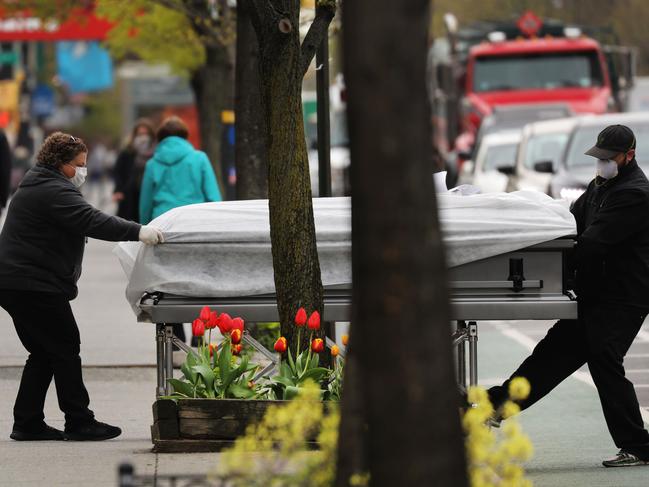
CHINA LASHES AUSTRALIA OVER CALLS FOR INQUIRY
China has accused Australia of “ideological bias and political games” over PM Scott Morrison’s calls for an independent inquiry into the COVID-19 pandemic.
China’s Foreign Ministry spokesman Geng Shuang said the proposed inquiry was a political move that would undermine global efforts to tackle the virus.
“At such a critical juncture, it is highly irresponsible to resort to politically motivated suspicion and accusation,” Mr Geng said.
“We advise the Australian side to put aside ideological bias and political games, focus on the welfare of the Australian people and global public health security, follow the international community’s collective will for co-operation, and contribute to the global co-operation in fighting the virus, instead of doing things to the contrary.”
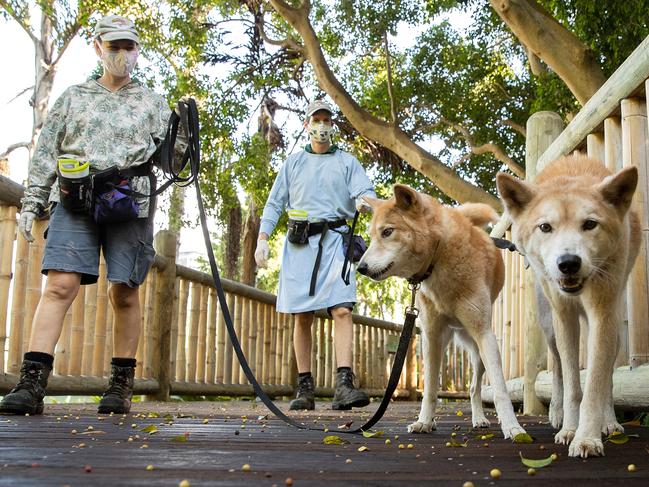
Mr Morrison and Foreign Affairs Minister Marise Payne have called for a “transparent international review into COVID-19”.
Mr Morrison, who has spoken about the proposed inquiry to US President Donald Trump and other world leaders, said complying with such an inquiry should be considered a “responsibility” by World Health Organisation members.
The US has halted funding to the WHO until a review is completed into its handling of the pandemic.
Even a Democratic opponent, New York Governor Andrew Cuomo, has supported Mr Trump’s demands for answers from the WHO.
SRI LANKA IN 24-HOUR LOCKDOWN, 30,000 ARRESTED
Sri Lanka has reimposed a countrywide 24-hour curfew after a jump in coronavirus cases.
The 46 new infections reported Friday — 30 were navy sailors on the hunt for civilians evading quarantine — were the highest in a day, the Associated Press reported.
Sri Lanka has confirmed 420 cases and seven deaths; the South Asian island nation has increased testing.
The new curfew remains in effect until Monday. Police have arrested more than 30,000 violators.
Meanwhile, in Poland people isolated in quarantine are upset about having to use a new government app that forces them to self regular “selfies” to authorities to prove they are remaining in place.
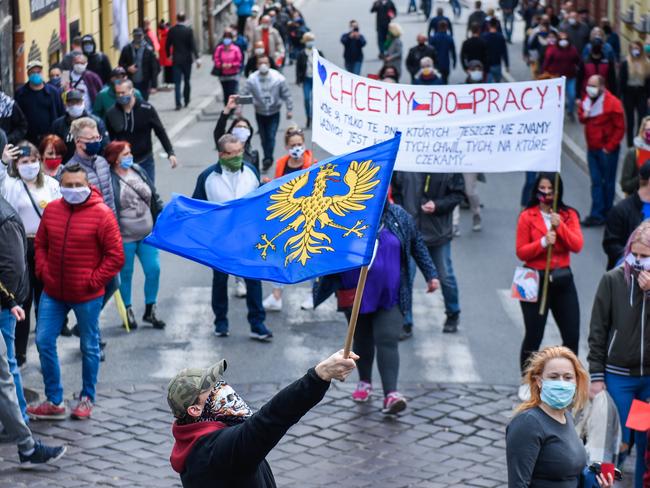
People arriving in Poland suspected of being at risk of having the virus by Polish health authorities must install the Home Quarantine app.
It prompts the user to take a straight-face real-time selfie at the quarantine address provided to the authorities.
By using geolocation and facial recognition algorithms, the Government can tell whether you’re at your quarantine residence or not. The app prompts you to take a selfie at random times, sometimes multiple times a day — and you have 20 minutes to respond. Police respond in instances where people do not send the required selfie in time.
Users are upset about what they see as an invasion of privacy.
AUSSIE DEATHS RISE AS SOCIAL DISTANCING IGNORED
Australia’s coronavirus death toll has risen to 80 as the nation commemorated Anzac Day at home due to social distancing measures.
Tasmania recorded its tenth COVID-19 fatality with a 90-year-old man dying at the Mersey Community Hospital in Latrobe.
Nine of Tasmania’s deaths have been in the northwest, where an outbreak has been responsible for more than 130 of the island’s 207 cases and earlier this month forced the closure of Burnie’s two hospitals.
Almost 6700 cases have now been recorded nationwide, a relatively modest increase on the 6565 a week ago. At the peak of the crisis at the end of March, cases were rising by over 200 a day.

There were 12 new cases in NSW, four of which were recorded at a western Sydney nursing home.
Caddens’ Anglicare Newmarch House – where a fifth person died on Friday morning – has now recorded 48 infections, making it NSW’s largest ongoing coronavirus cluster.
NSW Health Minister Brad Hazzard described the virus as “cagey”, “energetic” and “sneaky”, and urged members of the public to continue adhering to social distancing restrictions.
“If people become too relaxed or complacent, the virus can take off,” he told reporters.

“We know we’re doing well, but don’t let it lull you into a false sense of security.” Victoria has recorded just three new cases to a total of 1346. Fourteen of these have been connected to Albert Road Clinic, a private 80-bed psychiatric facility run by Ramsay Health Care.
Victoria’s Chief Health Officer Brett Sutton said the clinic had effectively been shut down.
Anyone who attended on or after March 24 is at risk of developing COVID-19. In Queensland, two new cases brought the total to 1026, while in Western Australian there was only one new case bringing the state’s total to 549. In the ACT, cases rose by one to 106, while in South Australia there were no new cases for a third day in a row, keeping the total at 438.
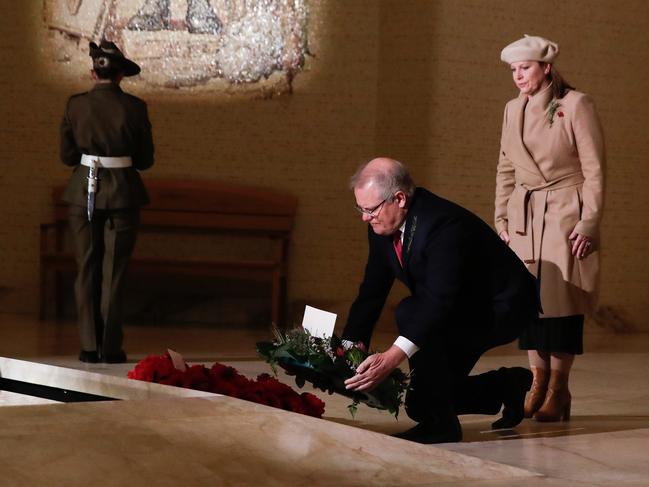
Social distancing measures meant Anzac Day services were either viewed on television, through social media channels or commemorated on the drives of people’s homes.
The televised Dawn Service at the Australia War Memorial in Canberra was reduced to a small number of dignitaries, including Prime Minister Scott Morrison, Governor-General David Hurley, New Zealand High Commissioner Dame Annette King and Opposition Leader Anthony Albanese.
HUNT REJECTS MASKS FROM CHINA
Meanwhile, federal Health Minister Greg Hunt has knocked back the offer of protective medical masks at inflated prices from Wuhan, China, the starting point of the virus.
“What we offered and were able to secure was longer-term contracts for volume and time, not one-off inflated purchases,” he told Nine newspapers.

The minister said that early in the spread of virus, a procurement team together with high level diplomatic efforts had locked in supply lines of masks, test kits and ventilators.
In the private sector the huge increase in demand has led to claims of profiteering, with prices for N95 masks rising sharply.
LOCKDOWNS START TO EASE IN ASIA
A tentative easing around the world of coronavirus lockdowns gathered pace Saturday with the reopening in India of neighbourhood stores that many of the country’s 1.3 billion people rely on for everything from cold drinks to mobile phone data cards.
The relaxation of the super-strict Indian lockdown came with major caveats. It did not apply to hundreds of quarantined towns and other hot spots that have been hit hardest by the outbreak that has killed at least 775 people in India and terrified its multitudes of poor who live hand-to-mouth in slum conditions too crowded for social distancing.
Shopping malls also remained closed across the country. Still, for families that run small stores, being able to earn again brought relief.

“This is a good decision,” said Amit Sharma, an architect. “We have to open a few things and let the economy start moving. The poor people should have some source of income. This virus is going to be a long-term problem.” Last week, India also allowed manufacturing and farming activities to resume in rural areas to ease the economic plight of millions of daily wage-earners left without work by the country’s lockdown imposed March 24. India’s stay-home restrictions have allowed people out of their homes only to buy food, medicine or other essentials.
Elsewhere in Asia, authorities on Saturday reported no new deaths for the 10th straight day in China, where the virus originated.

And South Korea reported just 10 fresh cases, the eighth day in a row its daily jump came below 20. There were no new deaths for the second straight day. In Sri Lanka, however, the lockdown was tightened, not eased, confirming a pattern of one-step-forward, one-step-back also seen elsewhere as countries battle the pandemic, trying to juggle public health against the health of shut- down economies.
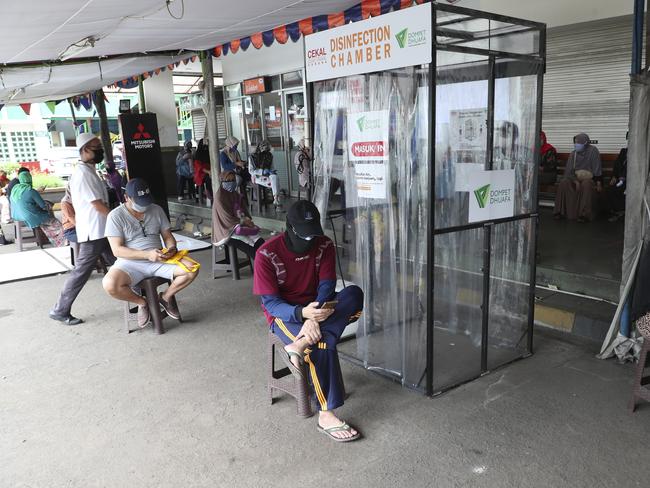
Sri Lanka had partially lifted a month long curfew during daytime hours in more than two thirds of the country. But it reimposed a 24-hour lockdown countrywide after a surge Friday of 46 new infections, the highest increase in a day on the Indian Ocean island. The new curfew remains in effect until Monday.
Pope Francis appealed to people to pray for funeral home workers, saying: “What they do is so heavy and sad. They really feel the pain of this pandemic.”
EUROPE’S PLANS FOR EASING RESTRICTIONS
In Europe, Belgium sketched out plans for a progressive lockdown relaxation, starting May 4 with the resumption of non-essential treatment in hospitals and the reopening of textile and sewing shops so people can make face masks.
Bars and restaurants would be allowed to start reopening June 8, although Belgian Prime Minister Sophie Wilmes also cautioned that a surge in infections could alter the timeline and that “nothing is set in stone.”

In France, the government is preparing to gingerly ease one of Europe’s strictest lockdowns from May 11.
Denmark has reopened schools for the youngest grades.
Kids in Spain will get their first fresh air in weeks on Sunday when a total ban on letting them outside is relaxed.
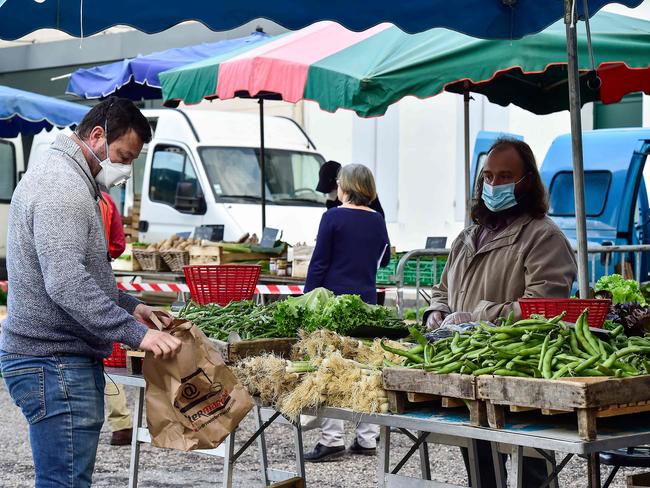
After 44 days indoors, they’ll be allowed to take one toy or scooter with them but not play together for the adult-supervised one-hour excursions no further than one kilometre from home.
Without a tried-and-tested action plan for how to pull countries out of coronavirus lockdown, the world is seeing a patchwork of approaches.
Schools reopen in one country, stay closed in others; face masks are mandatory in some places, a recommendation elsewhere.
AMERICAN STATES REOPEN AS OTHERS STAY SHUT
In the US, Republican governors in Georgia and Oklahoma allowed salons, spas and barbershops to reopen, while Alaska opened the way for restaurants to resume dine-in service and retail shops and other businesses to open their doors, all with limitations. Some Alaska municipalities chose to maintain stricter rules.
Though limited in scope, and subject to social-distancing restrictions, the reopenings marked a symbolic milestone in the debate raging in the United States and beyond as to how quickly political leaders should lift economically devastating lockdown orders.
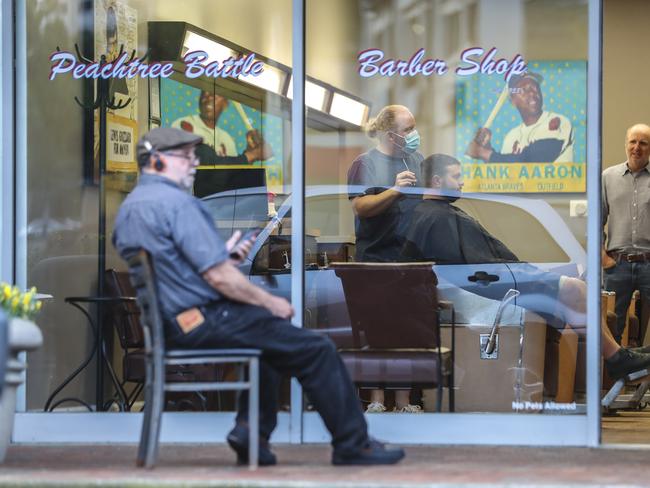
In Michigan, Democratic Governor Gretchen Whitmer lengthened her stay-at-home order through May 15, while lifting restrictions so some businesses can reopen and the public can participate in outdoor activities such as golf and motorised boating. Michigan has nearly 3,000 deaths related to COVID-19, behind only New York and New Jersey.
During a White House press briefing Friday, President Donald Trump spoke optimistically of the economy but also asked people to continue social distancing and using face coverings.
The same day, Trump signed a $484 billion bill to aid employers and hospitals under stress from the pandemic. Over the past five weeks, roughly 26 million people have filed for jobless aid, or about 1 in 6 US workers.
Trump also said his widely criticised comments suggesting people can ingest or inject disinfectant to fight COVID-19 were an attempt at sarcasm.
Originally published as Coronavirus updates: How the Federal Government’s COVID-19 tracing app really works


